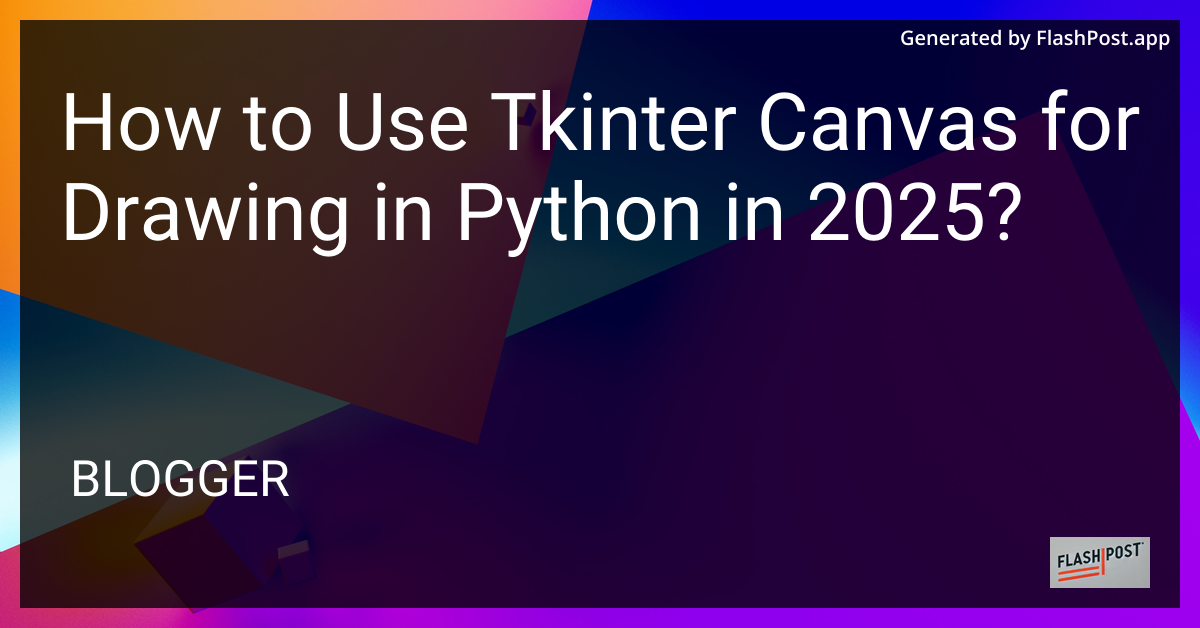How to Use Tkinter Canvas for Drawing in Python in 2025?

How to Use Tkinter Canvas for Drawing in Python in 2025
The year 2025 brings new features and advancements in the usage of Python’s Tkinter library, especially its Canvas widget. The Tkinter Canvas class is a versatile graphic tool, crucial for creating flexible and engaging user interfaces. It allows Python developers to draw shapes, create dynamic images, and embed interactive elements in applications. In this article, we will explore the latest ways to utilize the Tkinter Canvas for drawing in Python efficiently.
Getting Started with Tkinter Canvas
Why use Tkinter’s Canvas? The answer lies in its flexibility and power, making it ideal for drawing operations, handling custom user interfaces, and more. To get started with Tkinter Canvas, you’ll first need to install the Tkinter library if it’s not already installed in your Python environment. A typical installation command is:
pip install tk
Basics of Tkinter Canvas
Here’s a basic example to demonstrate how to create a simple Tkinter application with a Canvas:
import tkinter as tk
def main():
root = tk.Tk()
root.title("Tkinter Canvas Example")
canvas = tk.Canvas(root, width=400, height=400)
canvas.pack()
# Draw a rectangle
canvas.create_rectangle(50, 50, 150, 150, fill="blue")
# Start the application
root.mainloop()
if __name__ == "__main__":
main()
Advanced Canvas Drawing Techniques
In 2025, developers are leveraging new capabilities for more complex operations using the Tkinter Canvas.
- Drawing Shapes Efficiently: Learn how to efficiently use commands to draw various shapes, like ovals and polygons, with less code.
- Preventing Text Overlap: Manage text positioning to prevent overlapping within your Canvas.
- Center Frame Technique: Master techniques for centering frames within the canvas for a more intuitive layout.
Practical Applications
From interactive art installations to complex GUI applications, the possibilities are endless. As machine learning becomes more integral in application interfaces, debugging and deploying models can also enhance the interaction within the canvas.
Enhancing Canvas Features
Incorporate advanced features for a richer experience:
- Coloring Substrings: Add dynamic text features by coloring specific substrings within your canvas text elements.
- Implementing Machine Learning Features: Introduce machine learning predictions, like class prediction percentages, to provide interactive data visualization.
Conclusion
The Tkinter Canvas is an evolving tool in the Python ecosystem, offering developers sophisticated ways to create engaging user interfaces in 2025. From drawing shapes seamlessly to integrating advanced machine learning components, the Canvas widget is a powerful instrument in any developer’s toolkit.
Embrace the versatility of Tkinter Canvas in your next project and push the boundaries of design and functionality in your applications. Whether you are creating basic shapes or need complex drawing capabilities, the resources above will guide you to mastering the Tkinter Canvas.
For further insights on combining machine learning and graphical development, refer to articles on debugging machine learning on Windows, accessing class prediction percentages, and learning model deployment skills.
Comments
Post a Comment